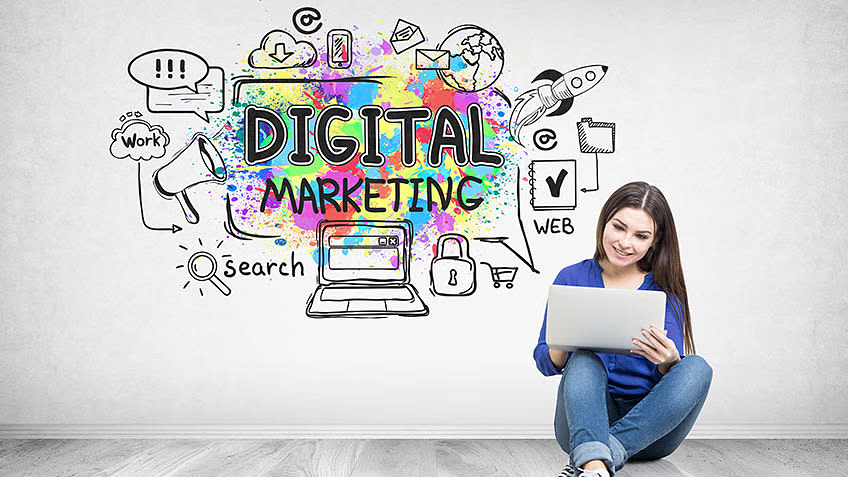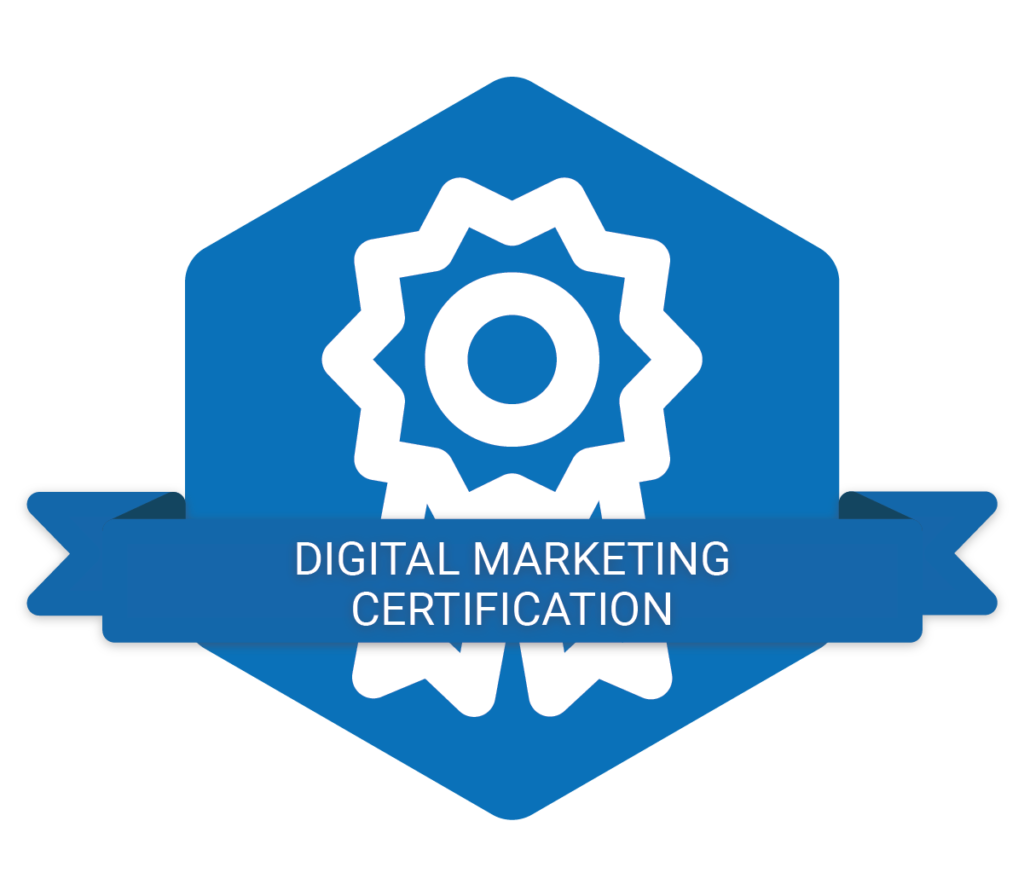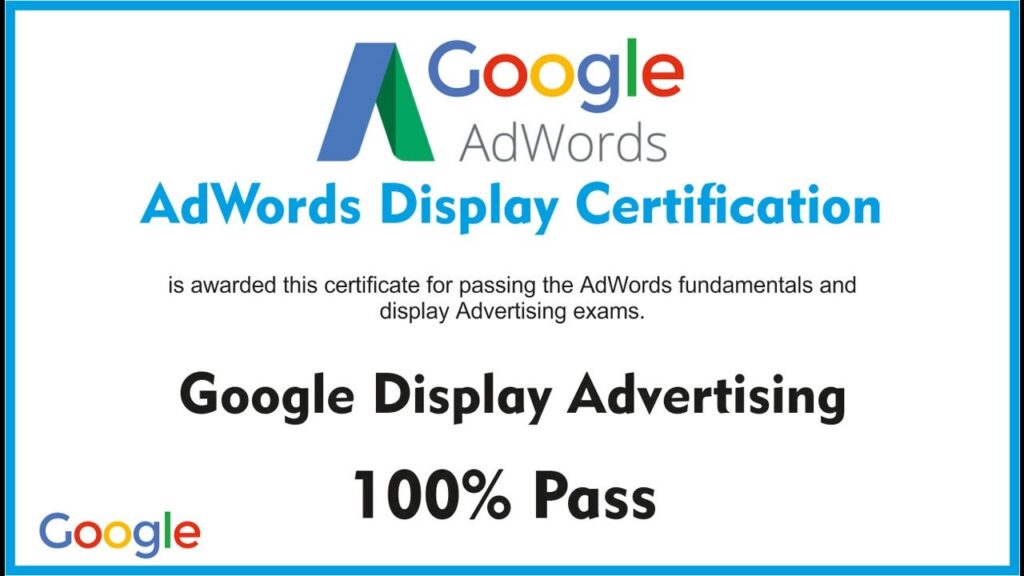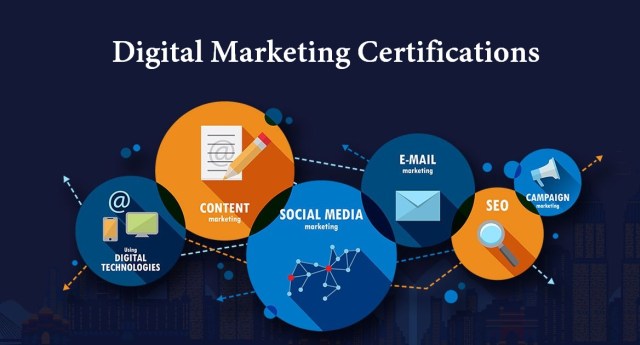Digital marketing, also called online marketing, is the promotion of brands to connect with potential customers using the internet and other forms of digital communication. This includes not only email, social media, and web-based advertising, but also text and multimedia messages as a marketing channel.

Digital marketing is the practice of promoting products or services using digital channels such as search engines, social media, email, and websites. It involves strategies like SEO to improve search engine rankings, email marketing to engage with customers, and social media marketing to increase brand awareness. The goal is to reach and engage with a larger audience online to drive traffic, leads, and sales.
Why is important digital marketing?
Digital marketing is important because it allows you to reach a larger audience online, where most people spend their time. It helps increase your brand’s visibility, drive more traffic to your website, and convert visitors into customers. By using digital marketing strategies like SEO, social media, and email marketing, you can effectively engage with your target audience and achieve better ROI compared to traditional marketing methods.
Digital marketing in future
The future is evolving with advancements in technology and changing consumer behaviors. Key trends include increased use of automation and AI for personalized marketing, a focus on customer retention through tools like email and SMS marketing, and the growing importance of data privacy. Additionally, emerging platforms and technologies such as voice search, augmented reality (AR), and virtual reality (VR) are expected to play significant roles in shaping digital marketing strategies.
Branches of digital marketing
- Content Marketing
- SEO (Search Engine Optimization)
- Social Media Marketing
- Email Marketing
- PPC (Pay-Per-Click) Advertising
- Affiliate Marketing
- Influencer Marketing
- Video Marketing
- Mobile Marketing
- Display Advertising

FREELANCE DIGITAL MARKETING ?
Freelance digital marketing refers to a self-employed contractor who assists one or more companies, organizations, or other clients with their marketing needs, usually remotely. Clients specify job duties, which can include: Creation of various content like videos,blogs. Freelance digital marketers help clients create, execute, and measure campaigns that promote their products or services. To begin a career in freelance digital marketing, you’ll need to follow several steps, including building an audience and connecting with brands.
CERTIFICATE
16+ digital marketing certifications
- Google Ads
- Google Analytics Individual Qualification (IQ)
- Google Digital Garage: Fundamentals of Digital Marketing
- Hootsuite Social Media Marketing Certification
- HubSpot Content Marketing Certification
- HubSpot Inbound Marketing
- Digital Marketing Institute Certified Search Marketing Specialist
- eCornell Digital Marketing Certificate
- Content Marketing Institute Online Certificate
- Meta Certified Digital Marketing Associate
- Copyblogger Certified Content Marketer
- Twitter Flight School Get Started on Twitter Badge
- quintly Social Media Analytics Course
- Microsoft Advertising Certification
- OMCP Digital Marketing Certification
- YouTube Certified
- GetResponse Digital Marketing Certification
- Northwestern Kellogg Digital Marketing Strategies: Data, Automation, AI & Analytics
- BrainStation Digital Marketing Certificate
- HubSpot Email Marketing Certification



Online methods used to build brand awareness
Digital marketing strategies may include the use of one or more online channels and techniques (omnichannel) to increase brand awareness among consumers.
Building brand awareness may involve such methods/tools as:
Search engine optimization (SEO)
Search engine optimization techniques may be used to improve the visibility of business websites and brand-related content for common industry-related search queries.
The importance of SEO to increase brand awareness is said to correlate with the growing influence of search results and search features like featured snippets, knowledge panels, and local SEO on customer behavior.
Search engine marketing (SEM)
SEM, also known as PPC advertising, involves the purchase of ad space in prominent, visible positions atop search results pages and websites. Search ads have been shown to have a positive impact on brand recognition, awareness and conversions.
Further information: Conversion as a service
33% of searchers who click on paid ads do so because they directly respond to their particular search query.
Social media marketing
Social media marketing has the characteristics of being in the marketing state and interacting with consumers all the time, emphasizing content and interaction skills. The marketing process needs to be monitored, analyzed, summarized and managed in real-time, and the marketing target needs to be adjusted according to the real-time feedback from the market and consumers. 70% of marketers list increasing brand awareness as their number one goal for marketing on social media platforms. Facebook, Instagram, Twitter, and YouTube are listed as the top platforms currently used by social media marketing teams. As of 2021, LinkedIn has been added as one of the most-used social media platforms by business leaders for its professional networking capabilities.
Content marketing
56% of marketers believe personalization content – brand-centered blogs, articles, social updates, videos, landing pages – improves brand recall and engagement.
Benefits of digital marketing
Possible benefits of digital marketing include:
- any information that is needed is accessible at any time and/or place
- surpasses internet marketing and also possesses alternatives choices without the internet needed
- top in presenting beneficial ways and features that reach, inform, engage, offer, and sell services and products to consumers
- businesses can attain data that present target audiences based on their age, location, interests, and education
- low investment, the cost per lead is 61% less expensive than traditional marketing
- able to reach every mobile user, there are over 14 billion worldwide mobile devices and with a projection to grow to almost 18 billion by the year 2024
Strategy
Planning
Digital marketing planning is a term used in marketing management. It describes the first stage of forming a digital marketing strategy for the wider digital marketing system. The difference between digital and traditional marketing planning is that it uses digitally based communication tools and technology such as Social, Web, Mobile, Scannable Surface. Nevertheless, both are aligned with the vision, the mission of the company and the overarching business strategy.
Stages of planning
Using Dr. Dave Chaffey’s approach, the digital marketing planning (DMP) has three main stages: Opportunity, Strategy, and Action. He suggests that any business looking to implement a successful digital marketing strategy must structure their plan by looking at opportunity, strategy and action. This generic strategic approach often has phases of situation review, goal setting, strategy formulation, resource allocation and monitoring.
Opportunity
To create an effective DMP, a business first needs to review the marketplace and set ‘SMART’ (Specific, Measurable, Actionable, Relevant, and Time-Bound) objectives. They can set SMART objectives by reviewing the current benchmarks and key performance indicators (KPIs) of the company and competitors. It is pertinent that the analytics used for the KPIs be customized to the type, objectives, mission, and vision of the company.
Companies can scan for marketing and sales opportunities by reviewing their own outreach as well as influencer outreach. This means they have competitive advantage because they are able to analyse their co-marketers influence and brand associations.
To seize the opportunity, the firm should summarize its current customers’ personas and purchase journey from this they are able to deduce their digital marketing capability. This means they need to form a clear picture of where they are currently and how many resources, they can allocate for their digital marketing strategy i.e., labor, time, etc. By summarizing the purchase journey, they can also recognize gaps and growth for future marketing opportunities that will either meet objectives or propose new objectives and increase profit.
Strategy
To create a planned digital strategy, the company must review their digital proposition (what you are offering to consumers) and communicate it using digital customer targeting techniques. So, they must define online value proposition (OVP), this means the company must express clearly what they are offering customers online e.g., brand positioning.
The company should also (re)select target market segments and personas and define digital targeting approaches.
After doing this effectively, it is important to review the marketing mix for online options. The marketing mix comprises the 4Ps – Product, Price, Promotion, and Place. Some academics have added three additional elements to the traditional 4Ps of marketing Process, Place, and Physical appearance making it 7Ps of marketing.
Action
The third and final stage requires the firm to set a budget and management systems. These must be measurable touchpoints, such as the audience reached across all digital platforms. Furthermore, marketers must ensure the budget and management systems are integrating the paid, owned, and earned media of the company. The Action and final stage of planning also requires the company to set in place measurable content creation e.g. oral, visual or written online media.
After confirming the digital marketing plan, a scheduled format of digital communications (e.g. Gantt Chart) should be encoded throughout the internal operations of the company. This ensures that all platforms used fall in line and complement each other for the succeeding stages of digital marketing strategy.
Understanding the market
One way marketers can reach out to consumers and understand their thought process is through what is called an empathy map. An empathy map is a four-step process. The first step is through asking questions that the consumer would be thinking in their demographic. The second step is to describe the feelings that the consumer may be having. The third step is to think about what the consumer would say in their situation. The final step is to imagine what the consumer will try to do based on the other three steps. This map is so marketing teams can put themselves in their target demographics shoes. Web Analytics are also a very important way to understand consumers. They show the habits that people have online for each website. One particular form of these analytics is predictive analytics which helps marketers figure out what route consumers are on. This uses the information gathered from other analytics and then creates different predictions of what people will do so that companies can strategize on what to do next, according to the people’s trends.
- Consumer behavior: the habits or attitudes of a consumer that influences the buying process of a product or service. Consumer behavior impacts virtually every stage of the buying process specifically in relation to digital environments and devices.
- Predictive analytics: a form of data mining that involves using existing data to predict potential future trends or behaviors. Can assist companies in predicting future behavior of customers.
- Buyer persona: employing research of consumer behavior regarding habits like brand awareness and buying behavior to profile prospective customers. Establishing a buyer persona helps a company better understand their audience and their specific wants/needs.
- Marketing Strategy: strategic planning employed by a brand to determine potential positioning within a market as well as the prospective target audience. It involves two key elements: segmentation and positioning. By developing a marketing strategy, a company is able to better anticipate and plan for each step in the marketing and buying process.
